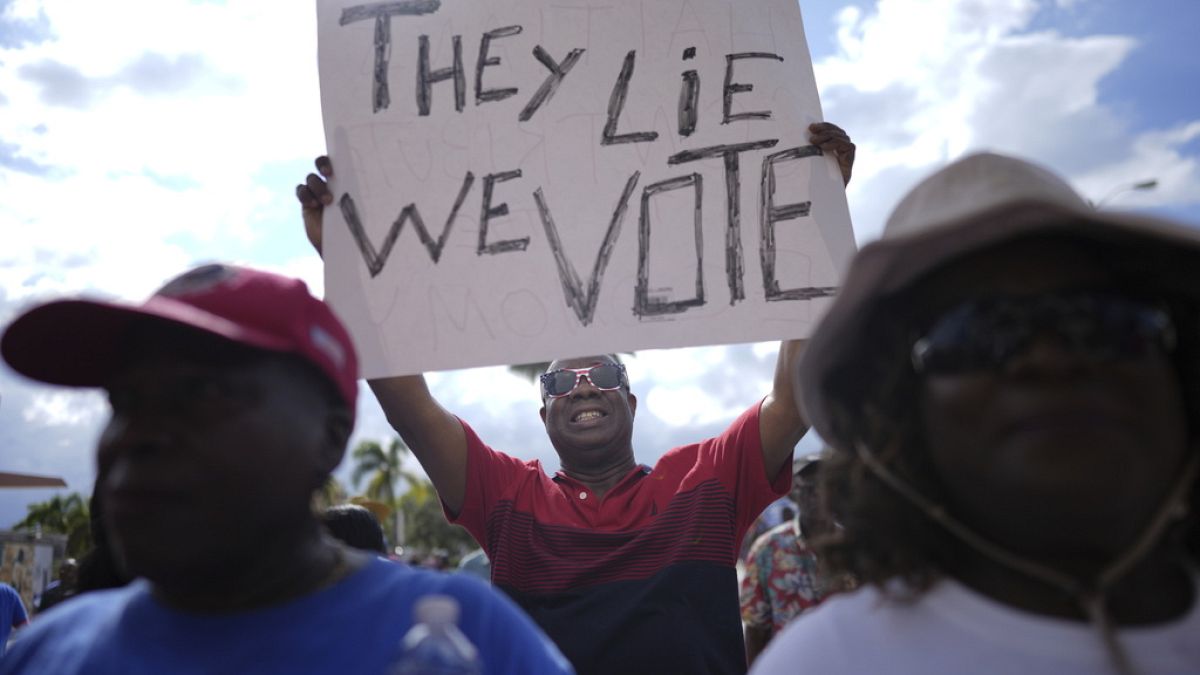Affordable insurance in high-risk areas, heatwave-proof housing and different work schedules are among dozens of new measures.
France is preparing for a future where global heating has risen to 4C above pre-industrial levels, sparking more wildfires and eroding its coastlines.
The government unveiled its third national climate adaptation plan yesterday (10 March), outlining dozens of measures to protect citizens in a possible 4C by 2100 scenario.
First shared by former Prime Minister Michel Barnier in October last year, the plan received almost 6,000 contributions during a public consultation, and has been developed with scientists and other experts.
"Adapting is not giving up," Agnès Pannier-Runacher, France’s minister of ecological transition, biodiversity, forests, the sea and fisheries, made clear when announcing the plan on social media site X yesterday.
“The government's policy rests on two legs: on the one hand, it continues to reduce greenhouse gas emissions, on the other, it adapts to the effects of climate change.”
France is aiming to reach carbon neutrality by 2050, having already seen its emissions drop by 20 per cent since 2017, according to Pannier-Runacher. But even if net zero is achieved by mid-century, scientists still predict temperatures in the country will climb by at least 4C by 2100 due to the continued impacts of burning fossil fuels.
What is France’s climate adaptation plan?
The new plan focuses on four priority areas, in geographic terms: coastlines, mountains, forests and agriculture.
Pannier-Runacher visited Saint-Hilaire-de-Riez in the Vendée region on Friday 7 March, Le Monde reports, where she was able to observe the retreat of the coastline.
"There is a very strong expectation from local elected officials, particularly in coastal, mountain or forest communities, but also from healthcare professionals and nursing home residents, who are already experiencing the effects of global warming," she told the French newspaper.
The package is designed to help sectors across the board - from business and transport, to infrastructure and agriculture - gradually adapt to the consequences of climate change.
It plots a trajectory for climate adaptation (TRACC) based on projections from the national weather agency Météo-France. In an incremental way, it prepares the country for temperature increases of 2C by 2030, 2.7C by 2050, and 4C by 2100 compared to pre-industrial levels.
There are then five categories of action: protecting people, ensuring the resilience of territories and essential services, adapting human activities, protecting natural and cultural heritage, and mobilising national resources.
Specific measures include creating a national map of exposure to natural risks, maintaining
affordable insurance offerings even in high-risk areas, and improving housing to remain comfortable despite rising temperatures.
“Adapting also means rethinking work,” Pannier-Runacher wrote on X. “Faced with heatwaves, it is necessary to adjust schedules, strengthen medical monitoring and protect workers.
“Let us take inspiration from countries like Greece who are already doing this,” she said.
French minister warns against a ‘Trumpisation of minds’
Discussing the climate adaptation plan yesterday, Pannier-Runacher added, “There is a form of Trumpisation of minds. Ecology is not a subject reserved for the bobos [bourgeois-bohemian subset] of the big cities.”
US President Donald Trump has been gutting federal agencies dedicated to climate science since taking office in January. The French government, though it has been criticised for U-turning on some environmental measures recently, signalled a different direction with its climate plan.
“The main victims of climate change, those who risk their health or lose their homes and jobs, are the working classes, contrary to what the populists try to make us believe,” Pannier-Runacher said.
Does France’s climate adaptation plan go far enough?
France has put itself ahead of the curve on climate adaptation, after being caught unawares by a deadly heatwave in 2003. The country has a detailed national heatwave plan in place, and cities like Paris are taking efforts a step further as they prepare for potential 50C summers.
Pannier-Runacher revealed that €1.6 billion in budgetary resources will be dedicated to the plan from 2025. That includes €1 billion from water agencies’ budgets, and €300 million from the Barnier Fund, set up for the prevention of major natural hazards.
Environmental groups have welcomed the plan, but raised concerns about how the measures will be implemented, and whether they are ambitious enough.
Speaking to French news agency AFP, vice-president of France Nature Environnement Nicolas Richard said it presents "a certain number of good intentions" but faces uncertainty about "whether they are funded and how they are managed".
According to a recent report from the Institute for Climate Economics, between €1 billion and €2.5 billion should be invested annually just in new buildings, €4.4 billion for housing renovation, and at least €1.5 billion per year for agriculture.

 3 weeks ago
12
3 weeks ago
12






 We deliver critical software at unparalleled value and speed to help your business thrive
We deliver critical software at unparalleled value and speed to help your business thrive






 English (US) ·
English (US) ·